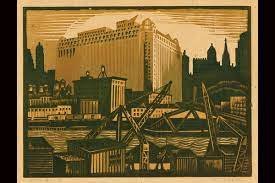Art is not merely a decorative element but an essential reflection of societal values and aspirations. Across civilizations and epochs, art has served as a powerful medium for communication, self-expression, and cultural preservation. This article delves into the profound influence of art on society, from shaping identities to driving social change.
Art as a Reflection of Culture
Art is intricately intertwined with cultural identity, acting as a mirror that reflects prevailing norms, beliefs, and ideologies. From ancient cave paintings to contemporary installations, artistic expressions evolve alongside society, encapsulating its ethos and evolution.
In ancient civilizations, art played a pivotal role in religious ceremonies, depicting deities and mythological narratives. Renaissance art celebrated humanism and intellectualism, while modern art movements like surrealism and abstract expressionism challenged traditional artistic boundaries.
Art’s Influence on Social Change
Throughout history, art has been a catalyst for social change, provoking thought and inspiring action. From political cartoons to protest art, artists have wielded their creativity to challenge authority, advocate for justice, and ignite revolutions. Iconic examples include Picasso’s “Guernica,” capturing the horrors of war, and Banksy’s murals critiquing contemporary society.
Art and Identity
Art shapes individual and collective identities, preserving cultural heritage and fostering a sense of belonging. Indigenous art, for instance, embodies centuries-old traditions and rituals, reaffirming cultural pride and resilience. Meanwhile, contemporary artists explore themes of migration, diaspora, and hybrid identities in a globalized world.
Art and Communication
Art transcends linguistic barriers, serving as a universal language that connects people across diverse backgrounds. Visual storytelling through paintings, sculptures, and installations conveys complex narratives and emotions, fostering empathy and understanding.
Art and Emotional Expression
Art provides a therapeutic outlet for emotional expression, offering solace and introspection. Art therapy harnesses creative processes to enhance mental well-being, aiding in the treatment of trauma, anxiety, and depression.
Art and Education
Arts education nurtures creativity, critical thinking, and problem-solving skills in learners of all ages. Exposure to art cultivates appreciation for aesthetics and cultural diversity, fostering a well-rounded education.
Art and Innovation
Artistic endeavors often inspire technological innovation and scientific discovery. Collaborations between artists and engineers have led to groundbreaking advancements in virtual reality, digital imaging, and interactive installations.
Art in Public Spaces
Public art revitalizes urban landscapes, fostering community engagement and civic pride. Cities worldwide embrace murals, sculptures, and installations as catalysts for cultural tourism and inclusive urban development.
Controversies in Art
Artistic expression occasionally sparks controversies, challenging societal norms and ethical boundaries. Debates surrounding censorship, appropriation, and artistic freedom underscore art’s provocative nature.
Digital Art and Virtual Realities
The digital age has transformed artistic creation, democratizing access to art through virtual platforms and immersive technologies. Digital art forms like computer-generated imagery (CGI) and augmented reality (AR) redefine the boundaries of artistic expression.
Art and Globalization
Globalization facilitates cross-cultural exchanges, influencing artistic trends and fostering artistic collaborations across continents. Artists draw inspiration from diverse traditions, creating hybrid art forms that bridge cultural divides.
Art’s Economic Impact
The creative industries contribute significantly to economic development, generating employment and stimulating tourism. Investments in art infrastructure and cultural initiatives spur economic growth and urban regeneration.
Art in the Digital Age
In an era of instant connectivity, art consumption and creation evolve rapidly. Online galleries, social media platforms, and NFTs (non-fungible tokens) revolutionize art distribution and ownership, presenting new opportunities and challenges for artists.
Landscape Art: Capturing Nature’s Essence
Landscape art is a genre that celebrates the beauty and majesty of the natural world. From pastoral scenes to rugged vistas, landscape artists employ various techniques to evoke a sense of awe and tranquility. This genre emerged prominently during the Romantic era, with painters like J.M.W. Turner and Caspar David Friedrich portraying landscapes as sublime and untamed. The principle of landscape art goes beyond mere representation; it embodies a deep reverence for nature and a desire to encapsulate its fleeting moods and grandeur on canvas.
Exploring the Principle of Art
At the core of artistic creation lies the principle of art, a set of fundamental guidelines that govern composition and aesthetics. One such principle is harmony, which refers to the pleasing arrangement of elements within a work of art. Artists achieve harmony through careful balance, proportion, and rhythm, ensuring that every component contributes to a unified whole. Balance, another key principle, involves distributing visual weight evenly across a composition, whether through symmetry or asymmetry.
Conclusion
Art is a dynamic force that transcends aesthetics, permeating every facet of society. Its impact extends beyond galleries and museums, shaping identities, fostering dialogue, and driving innovation. By embracing art’s transformative power, societies enrich cultural discourse and nurture creativity for generations to come.
FAQs
How does art influence societal norms?
Art challenges and reshapes societal norms by presenting alternative perspectives and advocating for change.
What role does art play in education?
Arts education enhances cognitive development, emotional intelligence, and critical thinking skills among students.
How does globalization impact artistic expression?
Globalization facilitates cultural exchanges, enabling artists to explore diverse influences and collaborate across borders.
What are the economic implications of investing in art industries?
Investments in art industries stimulate economic growth, supporting jobs and revitalizing communities.
How has technology revolutionized the art world?
Technology expands artistic possibilities, enabling new forms of expression such as digital art and immersive experiences.
